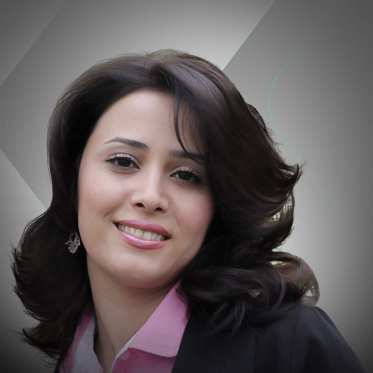Why women’s rights rhetoric is suddenly on the rise again in Iran

TEHRAN, Iran (Kurdistan24) – In elementary school, before we girls could understand why our bodies—unlike those of boys our age—had to be hidden and covered, we were told good girls were inconspicuous. Speaking and laughter were discouraged. The only occasion where screaming was applauded was when we were chanting: “Death to America,” “Death to Israel.”
Every four years during the presidential elections, Iranians are offered a unique level of freedom. Women who are otherwise punished for their non-Islamic dress codes are seen in photos with candidates, uncovered. Gender segregations are limited, and women’s rights rhetoric rises.
Additionally, the melancholic culture, whose holidays are mainly death anniversaries of some Imams, allows street celebrations. Citizens pressed under a crippling economy caused by sanctions, corruption, and mismanagement of resources are offered a ray of hope, provided they vote for so and so.
But what do women’s rights mean in a country whose supreme leader calls gender equality a “Zionist plot?”
How is women’s participation encouraged when their gender disqualifies them from running for the presidency?
The constitution decrees the president has to be a male, a believer in the Islamic Republic, and follower of the dominant sect of Islam (Twelve-Imam Shia).
Thus, the greater half of the Iranian population is automatically excluded. Hence, women’s “rights” means voting but not being trusted with an important position.
The number of Iranian women working in government positions has slightly increased compared to two decades ago, and this has provided a perfect propaganda tool for the state.
However, influential ministers such as Maryam Mojtahidzadeh, head of the women’s ministry, discuss “complementary” roles for women—not equality.
In Iran today, a woman’s most important decisions in life (marriage, child custody, divorce, employment, traveling abroad, etc.) legally requires a man’s approval: a father or grandfather, a husband, or a male judge.
Moreover, to draw voters and earn legitimacy, the government banks on horrors of invasions. Iranians are fearful their country will be destroyed like their neighbors Iraq, Syria, and Afghanistan.
Women fear they are the first victims of war and destruction, so they avoid reaching that point at all costs, even if it means supporting a dictator.

The prevailing myth in Iran, what the hardliners and the so-called reformists promote, is: Choose between violence and reform. They undermine options such as civil disobedience or boycotting the elections.
“Reformists” have offered no plan to make significant changes to the discriminatory laws of the constitution and yet they pressure the second-class citizens to vote for them “for stability.”
When women are legally allowed to run for lower rank positions such as city councils or parliaments, they lack confidence in themselves and other women to trust them with managerial roles.
Despite globalization, the massive population of Iranians in the diaspora, access to the internet and satellite, the unfair situation of Iranian women is in sharp contrast with the West because gender equality is not systematically taught in Iran.
Hence, many still wonder how feminism is not “a threat to families and society.”
The rising statistics of divorce is seen not as a protest to patriarchy, but as a negative impact of women’s relative liberation from cultural taboos.

Although 60 percent of Iranian college graduates are women, they make up some 13 percent of the workforce.
A portion of women has gained divorce and travel rights by stating those in their marriage licenses.
However, implementing legal loopholes by the upper-middle class has not improved life for the rest of the women.
Globalization has changed much in Iran, but women are still welcomed only when they contribute to patriarchy and nationalism.
The small freedom and hope offered during the election season, the massive propaganda about empowering women, the prevailing myth of “war or reformists,” allures women, minorities, and other second class citizens to the polling stations. This, in turn, further legitimizes the Islamic Republic and recreates a vicious cycle.
Editing by Karzan Sulaivany
